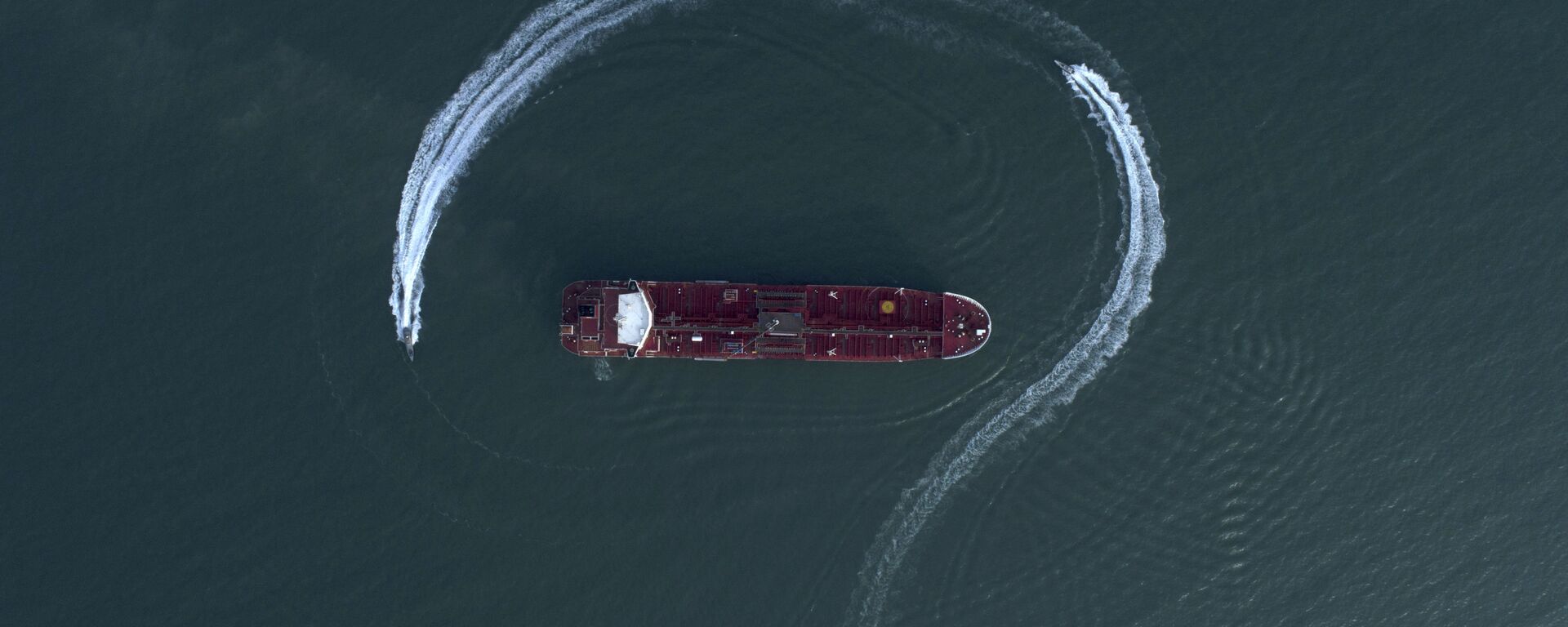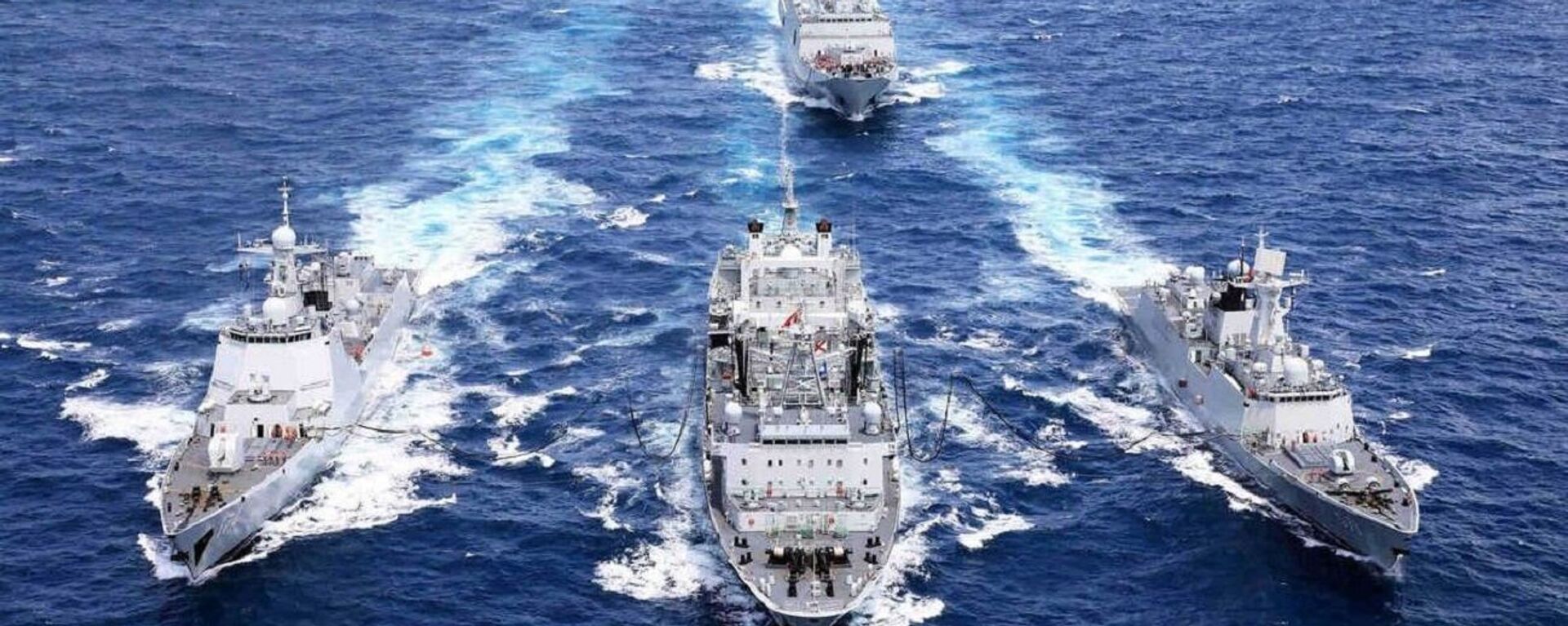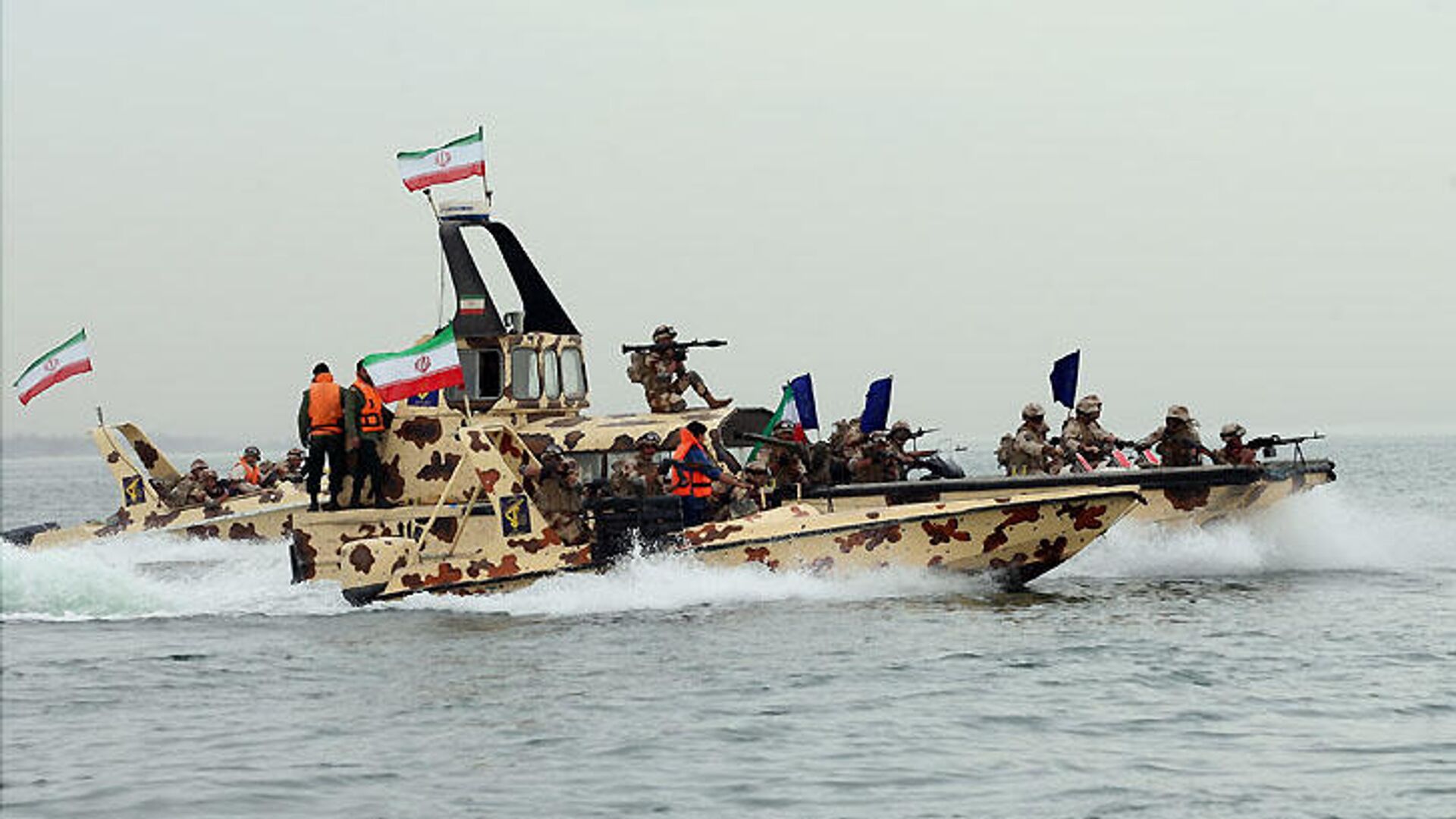https://sputnikglobe.com/20220110/us-media-concerned-by-irans-growing-naval-might-beefing-up-of-asymmetric-warfare-capabilities-1092156676.html
US Media Concerned by Iran’s Growing Naval Might, Beefing Up of Asymmetric Warfare Capabilities
US Media Concerned by Iran’s Growing Naval Might, Beefing Up of Asymmetric Warfare Capabilities
Sputnik International
The Islamic Republic showed off the extent of its naval power projection capabilities last year, when it sailed a mobile, missile-armed forward base and... 10.01.2022, Sputnik International
2022-01-10T13:35+0000
2022-01-10T13:35+0000
2022-01-10T13:35+0000
iran
navy
defence capabilities
https://cdn1.img.sputnikglobe.com/img/07e6/01/0a/1092156645_0:48:727:457_1920x0_80_0_0_4de9a6af5831293b181c58a168a2a2e4.jpg
Iran’s continued efforts to modernize its naval forces bodes toward strengthening the country’s control over the Persian Gulf, in part thanks to the Revolutionary Guard’s heavy reliance on asymmetric warfare tactics, US military affairs outlet Defence News has reported, citing policy experts studying the matter.The outlet points out that over the past year alone, Iran’s Navy and the Revolutionary Guard Navy, which operate as separate entities, added over 100 combat speedboats, the overhauled Alvand destroyer, four Martoob al-Sabehat swimmer delivery vehicles and other equipment to its arsenal.In 2022 and the years to come, the country plans to build additional equipment, including a second mobile forward base like the Makran support vessel, a heavy destroyer and domestically produced semi-heavy submarines.“Iran has recently tried to modernize its Navy, which is primarily designed for the defence of [the] Persian Gulf against foreign navies,” Sina Azodi, a nonresident fellow at the Atlantic Council, a Washington, DC-based think tank, told the outlet.Azodi said Iran has begun allocating more resources to its aging surface and sub fleet after the service spent decades relegated to being the smallest force in the military. He pointed out that unlike the naval forces of many other nations, Iran’s naval forces are distinctly divided between the conventional Navy and forces of the Revolutionary Guard.Azodi indicated that the Revolutionary Guard considers its asymmetric approach “quite effective against larger navies,” and noted that these tactics were borne out of the international arms embargoes the country has faced over the decades, giving rise to domestic solutions amid hesitation by other countries to sell Tehran naval technologies.“Gulf navies’ assets need to be equipped,” he urged, pointing to other Gulf nations’ dependence on costly US and French-bought frigates and other large surface ships. “They need thermal systems and thermal electro-optics to be able to detect [adversaries] from large distances, and radars that can monitor them from long distances,” al-Kenany said.‘Expanded Maritime Reach’Commenting on Iran’s growing naval power late last year, IRGC chief Hossein Salami boasted that the country’s advanced maritime technologies are a source of constant consternation for the Islamic Republic’s adversaries. “Before the Revolution [of 1979] all structures of our power were built by others, meaning that the pillars of our defence power were at the mercy of others. However, after the Islamic Revolution, we have achieved a [level of] power and technology, and this has stirred fear among Iran’s enemies,” he said.“Today, we have maintained our maritime domination, and also expanded our maritime reach,” Salami added, referring to last year’s 133-day, 45,000 km world-spanning trek by the Makran forward base and a Moudge-class frigate. The mini-flotilla’s journey sparked hysteria in Western media, which initially believed that it was headed for Venezuela with weapons, and then sounded the alarm after the Iranian warships sailed straight into the English Channel on their way to Russia.Iran’s conventional Navy includes homegrown Fateh and Ghadir-class coastal and midget submarines, Moudge-class frigates, and a range of fast attack and patrol craft, while the Revolutionary Guard operates hundreds of small speedboats fitted with heavy machine guns and rocket launchers.The IRGC has fearlessly launched these missile speedboats toward large US Navy vessels operating in the Gulf during periods of escalated tensions between the two countries, and former President Donald Trump repeatedly cautioned in frustration that America would blow the speedboats “out of the water” if they continued to “harass” the much larger American ships.
https://sputnikglobe.com/20210914/iran-plans-to-build-another-long-range-mobile-forward-base-conduct-new-trans-oceanic-missions-1089073902.html
https://sputnikglobe.com/20211103/irgc-thwarts-us-attempt-to-steal-iranian-oil-in-sea-of-oman-state-media-says-1090439182.html
https://sputnikglobe.com/20211115/irgc-chief-says-irans-advanced-maritime-technologies-stir-fear-among-enemies-1090747639.html
iran
Sputnik International
feedback@sputniknews.com
+74956456601
MIA „Rosiya Segodnya“
2022
News
en_EN
Sputnik International
feedback@sputniknews.com
+74956456601
MIA „Rosiya Segodnya“
Sputnik International
feedback@sputniknews.com
+74956456601
MIA „Rosiya Segodnya“
iran, navy, defence capabilities
iran, navy, defence capabilities
US Media Concerned by Iran’s Growing Naval Might, Beefing Up of Asymmetric Warfare Capabilities
The Islamic Republic showed off the extent of its naval power projection capabilities last year, when it sailed a mobile, missile-armed forward base and destroyer combo through the Indian Ocean, up the western coast of Africa in the Atlantic, through the English Channel, to Russia and back to Iran.
Iran’s continued efforts to modernize its naval forces bodes toward strengthening the country’s control over the Persian Gulf, in part thanks to the Revolutionary Guard’s heavy reliance on asymmetric warfare tactics, US military affairs outlet Defence News has
reported, citing policy experts studying the matter.
The outlet points out that over the past year alone, Iran’s Navy and the Revolutionary Guard Navy, which operate as separate entities, added over 100 combat speedboats, the overhauled Alvand destroyer, four Martoob al-Sabehat swimmer delivery vehicles and other equipment to its arsenal.
In 2022 and the years to come, the country plans to build additional equipment, including a second mobile forward base like the Makran support vessel, a heavy destroyer
and domestically produced semi-heavy submarines.

14 September 2021, 16:22 GMT
“Iran has recently tried to modernize its Navy, which is primarily designed for the defence of [the] Persian Gulf against foreign navies,” Sina Azodi, a nonresident fellow at the Atlantic Council, a Washington, DC-based think tank, told the outlet.
Azodi said Iran has begun allocating more resources to its aging surface and sub fleet after the service spent decades relegated to being the smallest force in the military. He pointed out that unlike the naval forces of many other nations, Iran’s naval forces are distinctly divided between the conventional Navy and forces of the Revolutionary Guard.
“The IRGC Navy and the Iranian Navy have two separate command structures. While some of their responsibilities overlap, the primary difference is the methods and strategies of operation,” the researcher explained. While both forces “share the same mission of defending the Iranian mainland in the Persian Gulf,” the IRGC strategy includes fast boat-centered asymmetric operations, while the Navy operates traditional surface warships and submarines.
Azodi indicated that the Revolutionary Guard considers its asymmetric approach “quite effective against larger navies,” and noted that these tactics were borne out of the international arms embargoes the country has faced over the decades, giving rise to domestic solutions amid hesitation by other countries to sell Tehran naval technologies.
Mohamed al-Kenany, a senior researcher at the Arab Forum for Analyzing Iranian Policies, a Cairo-based think tank, suggested that the “efficacy of the IRGC Navy in the Persian Gulf is very high because of the doctrine and strategy it uses,” and that the Guard “poses the biggest threat in the Gulf since it depends on asymmetric warfare and hit-and-run operations, especially swarm attacks.”
“Gulf navies’ assets need to be equipped,” he urged, pointing to other Gulf nations’ dependence on costly US and French-bought frigates and other large surface ships. “They need thermal systems and thermal electro-optics to be able to detect [adversaries] from large distances, and radars that can monitor them from long distances,” al-Kenany said.

3 November 2021, 09:39 GMT
‘Expanded Maritime Reach’
Commenting on Iran’s growing naval power late last year, IRGC chief Hossein Salami boasted that the country’s advanced maritime technologies are a source of constant consternation for the Islamic Republic’s adversaries. “Before the Revolution [of 1979] all structures of our power were built by others, meaning that the pillars of our defence power were at the mercy of others. However, after the Islamic Revolution, we have achieved a [level of] power and technology, and this has stirred fear among Iran’s enemies,” he said.
“Today, we have maintained our maritime domination, and also expanded our maritime reach,” Salami added, referring to last year’s 133-day, 45,000 km world-spanning trek by the Makran forward base and a Moudge-class frigate. The mini-flotilla’s journey
sparked hysteria in Western media, which initially believed that it was headed for Venezuela with weapons, and then sounded the alarm after the Iranian warships sailed straight into the English Channel on their way to Russia.

15 November 2021, 11:52 GMT
Iran’s conventional Navy includes homegrown Fateh and Ghadir-class coastal and midget submarines, Moudge-class frigates, and a range of fast attack and patrol craft, while the Revolutionary Guard operates hundreds of small speedboats fitted with heavy machine guns and rocket launchers.
The IRGC has fearlessly launched these missile speedboats toward large US Navy vessels operating in the Gulf during periods of escalated tensions between the two countries, and former President Donald Trump repeatedly cautioned in frustration that America would blow the speedboats “out of the water” if they continued to “harass” the much larger American ships.






